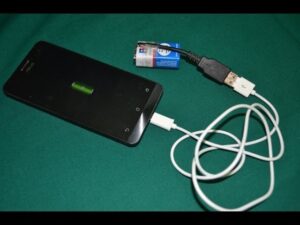Installing a Tesla wall charger typically costs between $1,000 to $2,500, depending on various factors like your home’s electrical system and installation specifics. Many Tesla owners are curious about this investment as they consider the convenience of charging at home.
Understanding how much to install a Tesla wall charger can help you plan effectively. Factors such as labor, materials, and potential electrical upgrades can sway the final price.
With the right information, making a decision about your charging setup becomes much simpler. Let’s explore the details to ensure you make the best choice for your electric vehicle.
“`html
How Much to Install a Tesla Wall Charger
Installing a Tesla Wall Charger can be an exciting step for many electric vehicle (EV) owners. It allows for convenient charging at home, eliminating the need to rely on public charging stations. However, a common question arises: how much does it actually cost to install a Tesla Wall Charger? In this article, we’ll dive deep into the various costs involved, factors that influence these costs, and other essential considerations before making your purchase.
Understanding the Tesla Wall Charger
Before getting into costs, let’s understand what a Tesla Wall Charger is. The Tesla Wall Connector is designed to charge your Tesla vehicle efficiently. It’s more powerful than standard home outlets, providing faster charging times.
– **Features of Tesla Wall Charger:**
– Adjustable power levels (up to 48 amps)
– Wi-Fi connectivity for software updates
– Compact and sleek design
Installing this charger at home means you can charge your vehicle overnight and start each day with a full battery.
Breaking Down the Costs of Installation
When considering the installation of a Tesla Wall Charger, several costs come into play. Here’s a detailed breakdown:
Cost of the Charger Unit
The first cost to consider is the price of the Tesla Wall Charging unit itself. As of now, the cost of the charger is around $550.
Electrical Work and Installation Fees
The next significant expense comes from the installation itself. Hiring a licensed electrician is essential, not just for safety but also to ensure the installation meets local code requirements.
– **Typical installation costs can range from $300 to $1,500** based on various factors:
– **Location of the Charger:** Installing it in a garage is generally less expensive than outdoors.
– **Distance from the Electrical Panel:** Greater distances may require more labor and materials.
– **Outlet Capacity:** If your existing circuit cannot handle the charger, you may need to upgrade your electrical service, which can increase costs significantly.
Permits and Inspections
In some areas, you may need to obtain permits for electrical work. Permit fees can vary greatly depending on your location but often range from $50 to $200.
Additional Costs to Consider
Some additional costs may also arise during the installation process. Consider the following:
– **Upgrading Your Electrical Panel:** If your panel cannot support the extra load, you may need an upgrade, which can cost anywhere from $1,000 to $3,000.
– **Trenching for Outdoor Installations:** If you’re installing outside and need to run wiring underground, this can add $300 to $1,000 to your total costs.
– **Subpanel Installation:** If your electrical panel is far away from the installation location, you might need a subpanel, typically costing between $500 and $1,500.
Factors Influencing the Cost of Installation
Several factors can influence the overall cost of installing a Tesla Wall Charger. Understanding these can help you better plan your budget:
Location
Your home’s geographical location plays a big role in installation costs. For instance, urban areas tend to have higher labor costs compared to rural areas. Local regulations and permit costs can vary widely as well.
Existing Electrical Infrastructure
The current condition and capacity of your electrical infrastructure significantly impact installation costs. If your electrical panel is outdated, you may face additional expenses when upgrading it to meet the needs of the Tesla charger.
Labor Costs
Labor costs can vary depending on the electrician’s experience and the local market. It’s beneficial to get quotes from multiple electricians to find a competitive rate.
The Installation Process
Understanding the installation process can help demystify costs and prepare you for what to expect. Here are the steps involved:
Consultation
Most electricians will begin with a consultation to assess your home’s electrical system and determine the best location for the charger.
Planning the Installation
After the assessment, the electrician will discuss any necessary upgrades, such as circuit breakers or electrical panel enhancements.
Obtaining Permits
Once everything is planned, you may need to apply for city or county permits, which the electrician can often help with.
Installation Day
On installation day, the electrician will:
– Shut off the power
– Install the wall connector
– Make necessary upgrades to the electrical system
– Test the system to ensure everything functions correctly
Financing Options for Installation
Installing a Tesla Wall Charger can be a sizable investment. Fortunately, there are financing options available to help spread out costs. Here are a few options to consider:
Paying Upfront
This is the most straightforward option. If you have the budget available, paying upfront can save money in the long run by avoiding interest fees.
Home Equity Loans or Lines of Credit
For those who own a home, using a home equity loan or line of credit can be a good option. Ensure that you understand the terms and conditions before proceeding.
Credit Cards
Some homeowners opt to pay with a credit card, especially if they can earn rewards or cash back. Just be mindful of interest rates.
Incentives and Rebates
Many states and local governments offer incentives or rebates for installing electric vehicle chargers. These can significantly lower the overall cost. Here’s how to find and take advantage of them:
Federal Tax Credits
The federal government offers tax credits for installing EV chargers. Keep track of current offerings and ensure you submit your tax paperwork accordingly.
State and Local Incentives
Research state or local programs that provide rebates for EV charger installation. Websites like the Department of Energy can help locate available incentives in your area.
Choosing the Right Location for Your Charger
Selecting the right location for your Tesla Wall Charger can affect both installation costs and charging convenience. Here are some tips:
Indoor vs. Outdoor Installation
– **Indoor Installation:**
– Usually cheaper.
– Provides protection from weather elements.
– **Outdoor Installation:**
– May require weatherproof enclosures and extra labor.
– More convenient if you park outside.
Proximity to Electrical Panel
Choose a location close to your electrical panel to minimize installation costs. If you install it far away, you may incur additional wiring costs.
Charging Accessibility
Make sure the location allows easy access to the charging port of your Tesla. Avoid spots that may require awkward maneuvers to plug in your vehicle.
Maintaining Your Tesla Wall Charger
Once your charger is installed, maintenance is key to ensuring its longevity and performance.
Regular Inspections
Have an electrician inspect the charger and wiring at least once a year to catch any potential issues early.
Keep it Clean
Regularly clean the charging unit and keep the area around it free of debris to maintain optimal performance.
Monitor Charging Performance
Pay attention to any changes in charging speed or performance. Sudden changes could indicate a problem that needs professional attention.
By understanding the various costs involved in installing a Tesla Wall Charger and planning accordingly, you can make an informed decision that fits your budget. Investing in home charging not only enhances the convenience of owning an electric vehicle but can also increase your home’s value in the long run. With proper planning and execution, you can enjoy the seamless experience of charging your Tesla right at home.
“`
Tesla wall charger install & cost ⚡️
Frequently Asked Questions
What factors influence the cost of installing a Tesla wall charger?
The cost of installing a Tesla wall charger varies based on several factors. Key elements include the type of electrical panel you have, the distance from the main electrical supply to the installation site, and any necessary upgrades to your electrical system. Local labor rates and permitting fees can also affect the overall cost, as well as whether you choose to hire a licensed electrician or proceed with a DIY installation.
Are there any additional expenses beyond the charger itself?
Yes, there can be additional expenses when installing a Tesla wall charger. In addition to the price of the charger, you may need to consider costs for electrical upgrades, wiring, circuit breakers, and installation labor. If your home requires significant electrical work to support the charger, these expenses can add up. Always budget for possible unforeseen costs to ensure a smooth installation process.
Can I install a Tesla wall charger myself to save money?
While installing a Tesla wall charger yourself might seem like a way to save on labor costs, it’s crucial to follow local electrical codes and safety regulations. If you lack experience with electrical work, hiring a licensed electrician is advisable to ensure proper installation and avoid potential hazards. Missteps during installation can lead to safety issues or damage to your vehicle, which could end up costing more in the long run.
Is there a rebate or incentive for installing a Tesla wall charger?
Many regions offer rebates or tax incentives for installing electric vehicle chargers, including Tesla wall chargers. These programs vary by state or municipality, so check with your local government or utility company to see what incentives are available. Taking advantage of these benefits can significantly reduce your overall installation costs.
How long does the installation process typically take?
The installation process for a Tesla wall charger usually takes a few hours to a full day, depending on factors like the existing electrical setup and any required upgrades. If your home already has the necessary wiring and a compatible electrical panel, the installation will be quicker. However, if extensive modifications are needed, it may take longer.
Final Thoughts
Installing a Tesla wall charger involves several factors that influence the total cost. The price includes the charger itself, installation labor, and any necessary electrical upgrades. On average, you might expect to spend between $500 to $2,000, depending on your specific circumstances and local labor rates.
Consider additional expenses like permits or modifications to your electrical system, which can further impact the overall cost. Assessing your power needs and the distance from your electrical panel to the installation site will help refine your budget.
In summary, understanding how much to install Tesla wall charger requires considering multiple elements, including equipment, labor, and possible upgrades. Thorough planning ensures a seamless installation process tailored to your needs.




